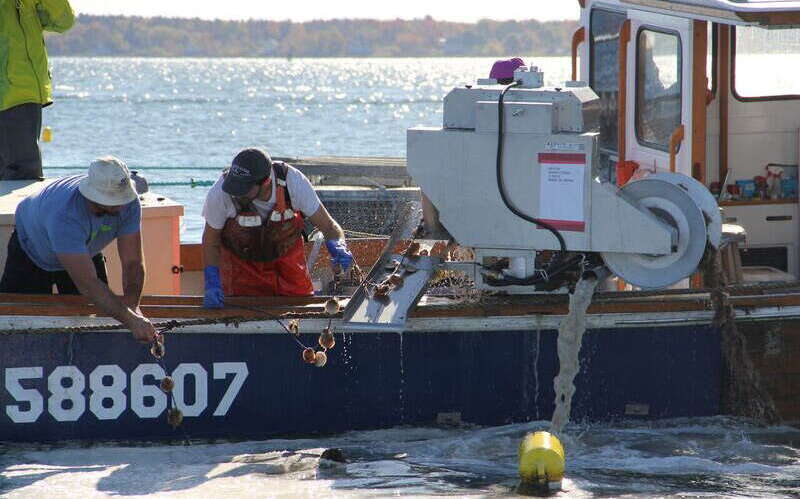
Processing Your Payment
Please do not leave this page until complete. This can take a few moments.
- News
-
Editions
View Digital Editions
Biweekly Issues
- December 1, 2025
- Nov. 17, 2025
- November 03, 2025
- October 20, 2025
- October 6, 2025
- September 22, 2025
- + More
Special Editions
- Lists
- Viewpoints
-
Our Events
Event Info
Award Honorees
- Calendar
- Biz Marketplace
Japanese expertise considered key to building Maine’s farmed scallop industry
 Photo / Courtesy University of Maine
Many of the scallop farming techniques used in the U.S. derive from practices in Japan, according to a University of Maine report.
Photo / Courtesy University of Maine
Many of the scallop farming techniques used in the U.S. derive from practices in Japan, according to a University of Maine report.
Following on previous exchanges, a group of eight stakeholders in Maine’s farm-raised scallop industry are planning to visit similar interests in Japan.
“Technology transfer is one of the fastest ways to build, support and ramp up an industry,” said Hugh Cowperthwaite, senior program director of fisheries and aquaculture for Coastal Enterprises Inc. in Brunswick. “By spending time in Japan, our hope is to gain first-hand experience meeting growers, harvesters, processors, retailers, restaurateurs and scientists to learn how sea scallops are grown, harvested, processed, marketed and made into various products to continue our work in Maine diversifying Maine’s coastal economy.”
The group will visit the northern prefectures of Aomori and Hokkaido, both of which have a climate and seasonality like Maine and are rooted in natural resource-based economies.
The trip, made possible by a grant from the Builders Initiative to CEI, is scheduled for Oct. 13-17.
‘Promising results’
The trip was organized by Cowperthwaite; Keiichiro Hamano, CEO of Japan Fishing Machine LLC; and Yoshinobu Kosaka, an expert on the physiology, ecology and aquaculture of scallops who lives in Aomori Prefecture and works as an advisor for many companies. Hamano and Kosaka helped the group establish connections in Japan.
Dana Morse, senior extension program manager for Maine Sea Grant and the University of Maine Cooperative Extension, provided additional support, drawing on his role in previous exchanges, which began with his 1999 visit to Aomori to study the scallop industry.
“We have learned so much over the years about scallop farming from our Japanese colleagues, so much that we now have a farmed industry in Maine and are seeing very promising results,” said Morse.
Cowperthwaite and Morse have been working on collaborative research and technology transfer initiatives together since 2002. Their work began initially with sea scallop spat collection, but their work has expanded to include farmed scallops and kelp. Most recently, the two are collaborating on efforts to promote the growth of farmed green sea urchins in Maine.

The Japanese have been sustainably growing and harvesting scallops for decades and have nearly perfected their grow-out techniques over the past 100 years.
Cowperthwaite and Morse have hosted Hamano and Kosaka in Maine to learn about farmed and wild fisheries, including lobster, sea urchins, scallops, oysters and kelp, and to make connections with squid fisheries in Rhode Island and farmed scallops in Atlantic Canada.
Aspiring growers
The upcoming delegation will include aspiring scallop growers:
- Emma Fernald, commercial lobster fisherman and owner of Bay Lady Scallops
- Phoebe Jekielek, postdoctoral researcher, University of Maine and Hurricane Island Center for Science and Leadership
- Hannah Twombly and Connor O’Neil, a wife-and-husband team on North Haven in Penobscot Bay who own and operate Island Grown Scallops
- Kirk Rouge, owner of KR Construction in Rockland, is researching methods to support the developing aquaculture industry using his tugboat and barge as a platform
- Michael Scannell, owner of Saco Bay Sea Farms LLC in Casco Bay and manager of Madeleine Point Oyster Farms in Yarmouth
Maine’s relationship with Aomori Prefecture began in 1889, when the 1,500-ton U.S. merchant ship Cheseborough, built in Bath, wrecked in a typhoon off the coast of Aomori. Citizens from the village of Shariki rescued four survivors and buried those who died, including Peter Erickson, the captain.
Maine and Aomori have been exchanging information on fisheries, energy practices, art, culture and education since 1994, thanks to two groups that nurtured the relationship: the nonprofit Friends of Aomori in Japan and the Maine Aomori Sister State Advisory Committee, a council appointed by Maine’s Governor’s Office in 2003.
Longstanding relationship
A different 12-member delegation from Maine, to include Cowperthwaite and Morse, will be visiting Aomori Oct. 9-11 to observe the 30th anniversary of the Maine/Aomori relationship.
“The unfortunate and tragic event of the wreck of the Cheseborough is the reason we have strong connections with Aomori,” said Cowperthwaite. “Many good things have come from this ongoing relationship.”
In 2016, 10 aquaculture and fisheries experts from Maine went to Aomori to learn techniques to grow scallops and to buy machinery to help harvest them.
In 2018, CEI purchased three custom scallop aquaculture machines built in Japan as part of a multi-phase initiative to further develop industry efforts in Maine.
Previous trips to Aomori occurred in 1999 and 2010. The machinery developed by the Japanese industry is designed to reduce the manual labor needed to culture scallops in high volume.
Japanese scallop enhancement and cultured grow-out is considered to be the most successful and oldest organized effort in the world, Cowperthwaite has said.
Business diversification
The aquaculture of sea scallops in Maine has been developing for about 20 years, according to the National Marine Fisheries Service. It’s considered an opportunity to diversify the seafood harvesting business.
It’s expected that, as harvest and demand increase, farmed scallops could create further opportunities within the seafood distribution supply chain nationwide.
According to a University of Maine report published earlier this year, much of the scallop farming techniques used in the U.S. derive from practices in Japan.
UMaine researchers have been analyzing the effectiveness of two different Atlantic sea scallop farming techniques, called “lantern net” and “ear-hanging.”
Lantern net aquaculture uses tiered, circular nets that attach to a long line and hang vertically in the water column, considered an easier and less expensive system to set up compared to the ear-hanging method. Scallops sit in each tier of the net.
Developed from Japanese methods, ear-hanging involves drilling holes into the “ear,” or the hinge, of the scallop shells, which are then pinned and hung on vertical lines in the water column.
“To combat start-up price, Japanese scallop farmers have used a number of different technologies and techniques that could be applicable in Maine,” the report said. “This includes specialized equipment, such as automated drilling and pinning machines, or a multi-partner ownership, in which one partner does the drilling and preparation, while the other does the farming and de-pinning.”
In 2024, 15 aquaculture and fisheries experts from Maine headed to Japan to study its wild and farm-raised kelp industry, with the goal of expanding Maine’s relatively young farmed kelp industry.
By contrast, Japan’s kelp and seaweed industry dates back to the mid-17th century and the products are a typical ingredient in Japanese cuisine.
Mainebiz web partners
Related Content
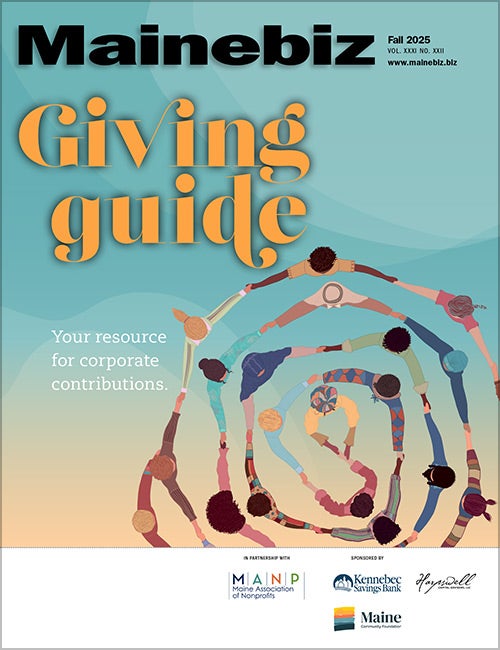
The Giving Guide
The Giving Guide helps nonprofits have the opportunity to showcase and differentiate their organizations so that businesses better understand how they can contribute to a nonprofit’s mission and work.
Learn More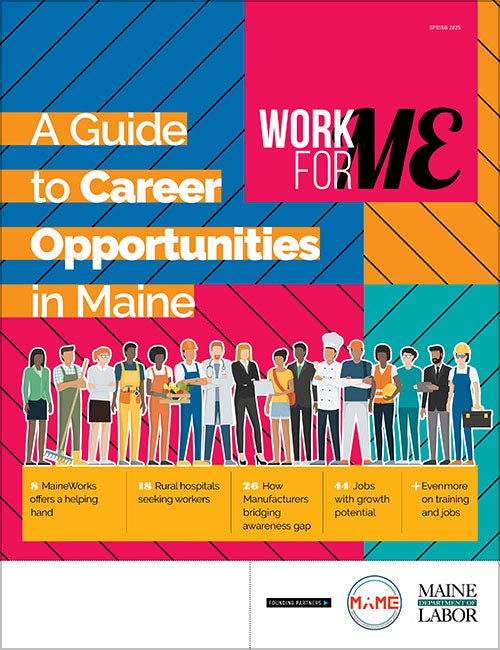
Work for ME
Work for ME is a workforce development tool to help Maine’s employers target Maine’s emerging workforce. Work for ME highlights each industry, its impact on Maine’s economy, the jobs available to entry-level workers, the training and education needed to get a career started.
Learn More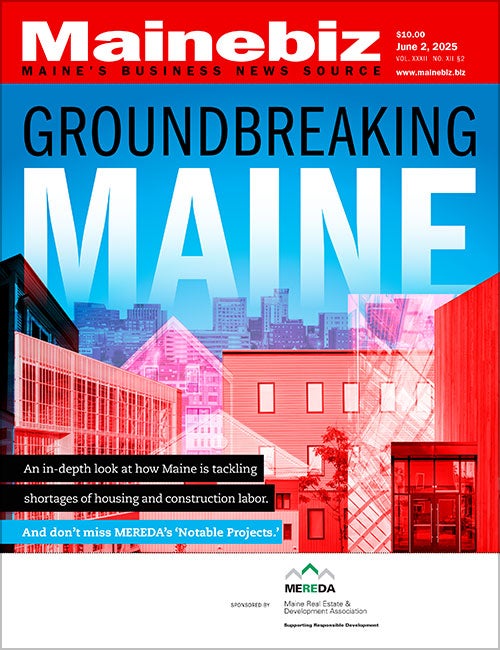
Groundbreaking Maine
Whether you’re a developer, financer, architect, or industry enthusiast, Groundbreaking Maine is crafted to be your go-to source for valuable insights in Maine’s real estate and construction community.
Learn more-
The Giving Guide
The Giving Guide helps nonprofits have the opportunity to showcase and differentiate their organizations so that businesses better understand how they can contribute to a nonprofit’s mission and work.
-
Work for ME
Work for ME is a workforce development tool to help Maine’s employers target Maine’s emerging workforce. Work for ME highlights each industry, its impact on Maine’s economy, the jobs available to entry-level workers, the training and education needed to get a career started.
-
Groundbreaking Maine
Whether you’re a developer, financer, architect, or industry enthusiast, Groundbreaking Maine is crafted to be your go-to source for valuable insights in Maine’s real estate and construction community.
ABOUT
NEW ENGLAND BUSINESS MEDIA SITES
No articles left
Get access now
In order to use this feature, we need some information from you. You can also login or register for a free account.
By clicking submit you are agreeing to our cookie usage and Privacy Policy
Already have an account? Login
Already have an account? Login
Want to create an account? Register
Get access now
In order to use this feature, we need some information from you. You can also login or register for a free account.
By clicking submit you are agreeing to our cookie usage and Privacy Policy
Already have an account? Login
Already have an account? Login
Want to create an account? Register

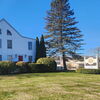
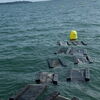


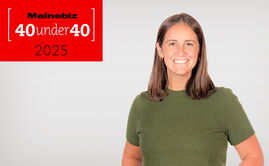
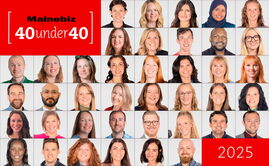
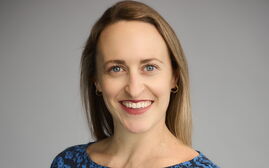
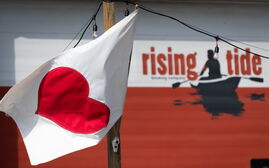

0 Comments